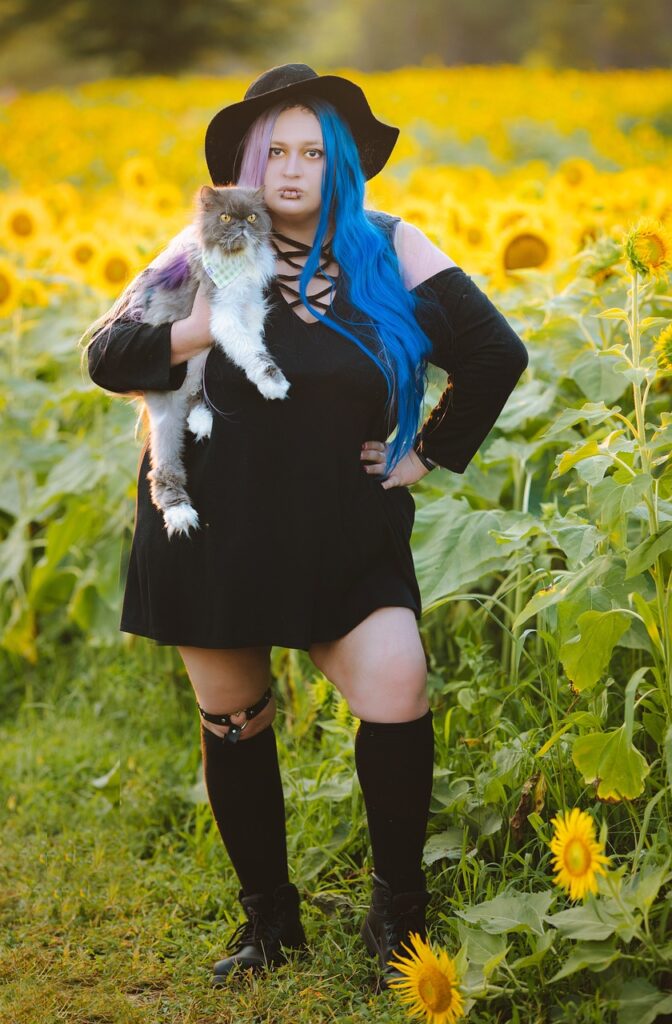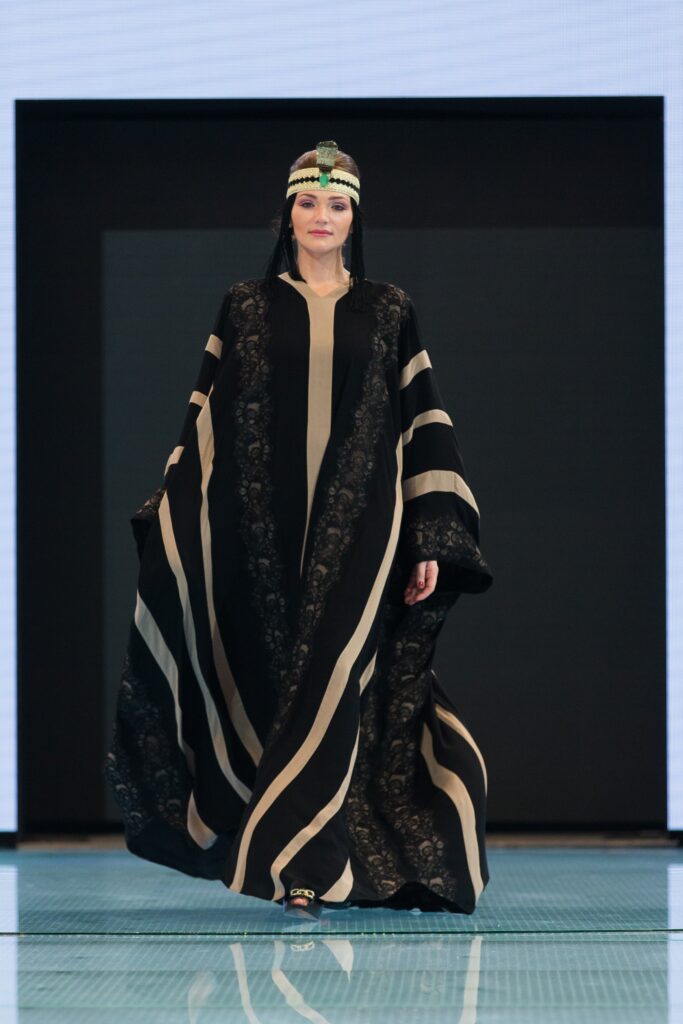Table of Contents
Introduction
The global fashion industry has undergone massive transformation over the last two decades. Where once the focus was on narrow standards of beauty and fleeting trends, today the emphasis has shifted toward inclusivity, diversity, and responsibility.
One of the most powerful shifts has been the recognition of plus size clothing as an essential part of mainstream fashion. For decades, plus size consumers were underserved, forced to settle for limited designs, poor fits, and lack of fashionable choicesPlus size clothing
. Fortunately, the industry has begun to change, with more designers, retailers, and brands offering extended size ranges that rival standard sizes in both creativity and quality.
At the same time, another major revolution has shaped the industry: sustainable fashion. With growing awareness about climate change, waste production, and exploitation in fast fashion supply chains, sustainability has become more than a buzzword
. Consumers now demand transparency, eco-friendly fabrics, ethical production practices, and durable clothing. Sustainable fashion promotes quality over quantity, responsibility over excess, and longevity over disposability.
When these two powerful movements—size inclusivity and sustainability—merge, the result is truly transformative.
Plus size clothing designed with sustainable practices not only empowers individuals of all body types to look stylish, but also contributes positively to the planet.
By combining thoughtful design, eco-conscious materials, and inclusive sizing, brands are creating clothing that celebrates individuality and protects the environment.

The Emergence of Sustainable Plus Size Fashion
The growth of sustainable fashion has been one of the hallmarks of 21st-century fashion. But for decades, sustainable brands ignored plus size fashion, concentrating on the smaller size range instead.
This left much of the market underrepresented. The outcome was disillusionment for those consumers who desired fashionable and sustainable choices but were unable to find these in their size.
Now, the game is on. With many sustainable fashion brands, inclusiveness has to go hand in hand with responsibility. After all, one’s wardrobe of this kind has to be accessible to one and all irrespective of body type.
This has made more and more designers have extended size ranges with their eco-friendly standards intact.
Three factors have contributed to the growth of sustainable plus size fashion:
Consumer Demand: Plus-size consumers are a significant and expanding demographic within the fashion industry.
They are being heard, and they want fashionable, sustainable clothing choices.
Industry Awareness: Fashion companies are realizing that actual sustainability is not about the fabric—it’s about inclusivity as well.
Apparel that excludes significant portions of the population cannot be deemed completely sustainable.
Innovation in Fabrics: Fabric technology has improved to the extent that sustainable fabrics can be stretched, draped, and fit perfectly on various body types.
- The change is important because it signifies that sustainable fashion is no longer limited to a privileged few. Rather, it is turning into a movement that encourages everyone, even plus size dressers, to engage in environmentally friendly style.Plus size clothing
- Trend 1: Organic Cotton Dresses for All-Day Comfort
- Organic cotton is one of the most recognizable sustainable fashion materials today, and for a very good reason. While traditional cotton is made using intensive pesticide use, synthetic fertilizers, and water-guzzling agricultural methods, organic cotton is cultivated using practices that are beneficial to the environment and farmers alike. It uses less water, shies away from toxic chemicals, and yields softer and more resistant fibers.
- Organic cotton is especially useful for plus size. The organic cotton material is breathable, hypoallergenic, and pleasant to wear throughout the day. Dresses in organic cotton provide versatility: they are suitable for everyday use, dressed up for the workplace, or accessorized for social occasions. Organic cotton’s softness and resistance mean garments will not lose form and structure when washed repeatedly—a consideration in quality maintenance when it comes to larger sizes.
- Designers are making more and more organic cotton dresses that enhance various body types. From A-line dresses that draw attention to curves to wrap dresses that provide definition around the waist, organic cotton is accommodating enough to be used in a wide variety of styles. Additionally, its natural texture provides a carefree chic that adheres beautifully to the tenets of eco-friendly fashion.
- Brands that value both sustainability and inclusiveness are at the forefront of providing organic cotton dresses in plus sizes. These dresses represent how plus size fashion can be both stylish and sustainable. They show that sustainability doesn’t have to involve forgoing comfort or style but rather elevates them.
Trend 2: Recycled Fabrics in Plus Size Fashion
As sustainable fashion continues to evolve, recycled fabrics have become a significant innovation. Recycled fibers — recycled polyester (rPET), reclaimed nylon, or regenerated cellulose fibers — breathe new life into materials that would otherwise be land-filled.
For plus size fashion, recycled fabrics offer functional benefits alongside environmental advantages.
What “recycled” actually means
Reused materials are made from post-industrial or post-consumer waste. Plastic bottles can be washed, melted, and formed into yarns made of polyester.Plus size clothing
Used fishing nets and industrial nylon scrap can be re-formed into tough, resilient nylon. Cellulosic fibers may be regenerated from textile wastes or plant residues
. These minimize dependence on virgin petroleum-based products and reduce energy and water consumption in comparison to conventional fabric manufacturing.

Why recycled fabrics are important for plus size fashion
Recovery and durability: Recycled polyester and reclaimed nylon tend to be extremely durable and recover well — critical for clothing that has to handle repeated wear.
When high-quality recycled yarns and good construction are used by manufacturers, plus size clothing maintains its fit and form longer.Plus size clothing
Performance details: Much sporty or performance-oriented plus size items (leggings, active tees, outerwear lining) now incorporate recycled technical fabrics that provide stretch, moisture-wicking, and quick-dry.
This opens up sustainable choices beyond everyday wear into active and performance categories.
Lower environmental footprint: For consumers who care about the environment, purchasing plus size apparel created from recycled materials is a tangible means of reducing their individual footprint.
Styling and product ideas
Well-draping recycled polyester knit dresses.
Compression and recovery plus size high-waist leggings created from a mixture of recycled nylon and elastane.https://www.elle.com/fashion
Blouses or shirting created from a recycled viscose blend with a silk-like feel without the virgin cellulose harvest effects.
Care & longevity
Recycled fabrics behave similarly to their virgin counterparts: wash according to label, avoid high-heat drying when possible, and fix small snags/stitches early. Longevity is key in sustainable fashion — a well-cared-for recycled garment lasts longer than many fast-fashion alternatives.styloshine.com
Trend 3: Ethical Denim for Plus Size Shoppers
Denim is ageless, and when revamped in the context of sustainable fashion, it can be a value-based option for plus size apparel. Ethical denim considers each phase of production: water consumption, dyeing techniques, employee conditions, and material sourcing.

Why is denim ethical?
Water-conserving processes: Denim dyeing and finishing normally consume huge amounts of water. Ethical denim companies employ waterless dyeing technologies, ozone treatment, or closed-loop systems that reuse water.
Lower-impact fibers: Denim weaves containing Tencel™ Lyocell or recycled cotton minimize virgin cotton dependence and enhance drape and comfort.Plus size clothing
Responsible finishing: Minimizing harsh chemical finishes and protecting workers are essential elements of ethical denim manufacturing.
Plus size considerations in denim
Acquiring well-fitting denim is an ongoing problem for most plus size shoppers. Inclusive sustainable denim brands spend on pattern-making that accommodates actual body shapes and not just scaling patterns larger.
Some important fit features include:
Curved waistband to avoid gaping at the back.
High-rise styles for tummy coverage and comfortable sit.
Stretch blends that retain recovery (recycled nylon/elastane
blends).
Length and rise mix so consumers may pick the perfect silhouette for their figure.
Styling & wardrobe creationPlus size clothing
Timeless straight-leg jeans with a dark wash for office-friendly outfits to be worn with a tucked recycled-fiber blouse.
Denim jackets shaped to fit fuller waists and wider shoulders — ideal for layering in spring/fall.
Denim skirts in A-line styles that drape well with the body and complement organic cotton tops.
Repair & circularity
Sustainable fashion includes ethical denim when brands promote repair, provide hem/alteration services, or operate take-back programs to recycle used items. For plus size collections, long-lasting denim that can be altered in line with changing tastes is particularly precious.
Trend 4: Plus Size Styling for Minimalist Capsule Wardrobes
Minimalism and capsule wardrobes are fundamental concepts of sustainable fashion: create fewer, better-designed pieces that mix-and-match for multiple looks. For plus size fashion, a capsule solution addresses two issues at once — it curbs consumption and makes dressing easier with flattering, well-fitting pieces.
- Creating a plus size capsule
- A well-curated plus size capsule could feature:
- 2–3 premium tops (organic cotton tees, silk-textured blouses).
- 1–2 pairs of well-fitting bottoms (dress trousers + denim).
- 1 multipurpose dress (wrappable or A-line shape).
- 1 tailored blazer or jacket (eco-friendly fabric).
- 1 pair of good-quality, long-lasting shoes.
- Layering pieces such as a knit cardigan or a trench in eco-friendly materials.
- Why capsule wardrobes are beneficial for plus size clothing
- Improved fit investment: Spending money on fewer, bettershaped items results in extra focus on fit and tailoring — a critical plus for plus size consumers.
- Mix-and-match convenience: By designing each piece to work together, outfit choice fatigue is reduced and the closet becomes more than its physical size.
- Sustainability by longevity: Capsule pieces are chosen for longevity and classic style, keeping with sustainable fashion’s goal of minimizing waste.
- Design guidelines for capsules
- Select neutral color schemes with 1–2 accent colors for contrast.
- Prioritize fabrics that won’t pill, fade, or wear.
- Choose silhouettes that can be layered seasonally (a sleeveless t-shirt under a cardigan).
- Ensure waistlines, sleeve lengths, and hemlines are balanced thoughtfully on plus size figures.
- Shopping smarter
- Seek out clear size charts, fit-mentioning customer reviews, and detailed measurements from brands — these all lower returns (which decreases shipping emissions) and raise the likelihood of a good long-term fit.
Trend 5: Slow Fashion Brands Offering Extended Sizes
The slow fashion movement — good quality rather than quantity, ethical manufacturing, and classic design — has come to seriously champion inclusivity. For countless plus size fashion consumers, slow fashion labels offer a gracious respite from cheaply made, ill-fitting fast fashion alternatives.
Features of slow fashion labels
- Small-batch manufacture that makes it easier to check quality.
- Open supply chains: brands that reveal where and how clothes are produced.
- Higher-quality materials selected for durability (organic cotton, linen, hemp, ethically-sourced wool).
- Timeless styles designed to be worn season upon season.
- Why slow fashion works for plus size consumers
- Careful attention to pattern and fit: Small-batch production enables brands to invest in improved pattern-making across a range of sizes.
- Custom or made-to-measure options: Many slow brands provide bespoke adjustment or made-to-measure services, which can be especially beneficial for plus size garment wear.
- Ethical alignment: Consumers who value social responsibility can discover brands with values aligned with their own — from fair labor to eco-friendly production.
- Finding responsible slow fashion brands
- Search for transparency reports or factory details.
- Check for certifications (Global Organic Textile Standard – GOTS, Fair Trade, B Corp mention).
- Read company stories: ethical buying and long-term worker relationships are good indicators.
- Styling & wardrobe longevity
- Items from slow fashion collections complement capsule principles well and tend to be treasured wardrobe staples. A slow-fashion plus size wrap dress, for instance, will be re-styled throughout seasons: layered, belted in different ways, or matched with various shoes for diverse looks.
Plus Size Fashion: 9 Gorgeous Sustainable Fashion Trends
Trend 6: Multifunctional Plus Size Activewear
Activewear is now a staple in current wardrobes, going beyond the fitness club to become part of the daily wardrobe. For plus size fashion, activewear has previously been under-represented, with limited styles and fit. With sustainable fashion on the rise, inclusive activewear is being revolutionized with environmentally friendly materials and ethical production.
Eco-friendly fabric for activewear
Recycled nylon and polyester: Offer stretch, durability, and breathability with less dependence on virgin petroleum-based fibers.
Organic cotton blends: Natural and soft, ideal for yoga, pilates, or general activity.
Bamboo and hemp fibers: Provide natural moisture-wicking capabilities and antimicrobial effects.
Why this is important to plus size consumers
For decades, activewear sizing didn’t accommodate differences in body types, resulting in clothing that was too small, too short, or unsupported. Sustainable activewear companies are solving this with:
Wider waistbands for support and stability to feel comfortable throughout the day.
High-rise fits to prevent rolling up while moving.
Longer size ranges that actually show demand.
Styling outside the gym
Versatile items such as leggings, sports bras, and zip-up tops created with sustainable materials are now fashioned to easily convert into everyday wear. For instance, recycled nylon leggings with an oversized organic cotton hoodie form an off-duty ensemble, while bamboo-fiber top can be used both for workouts and as an everyday casual top.
Trend 7: Upcycled and Handmade Plus Size Outfits
Upcycling has been an empowering declaration for sustainable fashion — revamping old or discarded materials to create new clothes. Upcycling is creativity, uniqueness, and sustainability for plus size clothes.
Why upcycled fashion stands out
One-of-a-kind designs: Each item tends to carry unique elements, from patchwork jeans to hand-sewn embroidery.
Less waste: Materials that may otherwise be discarded have a second chance.
Artisan value: Much upcycled work is done by hand, sustaining independent designers and small businesses.
Plus size consumer benefits
Customization is commonly possible through upcycling. Plus size upcycled garment specialists can make pieces to individual body measurements, offering flattering fits that mass retailers can miss. Handmade clothing also provides an opportunity for shoppers to be distinctive, rejecting the sameness of fast fashion.
- Examples
- Upcycled denim jackets featuring panels of past fabric.
- Patchwork maxi skirts made from upcycled cotton.
- Handmade organic linen tops with natural dyes.
- Trend 8: Eco-Friendly Evening Wear for Plus Size Consumers
- Evening wear has been a tricky category for plus size fashion historically. The need for fashionable, high-end pieces in extended sizes has long been overlooked. Sustainable fashion is breaking that, providing green yet sophisticated choices for special occasions.
- Key fabrics for sustainable evening wear
- Peace silk (Ahimsa silk): Not harming silkworms to produce it.
- Tencel™ Lyocell: A drapey, smooth fiber derived from responsibly sourced wood pulp.
- Organic cotton sateen: A firmer, yet environmentally friendly, option.
- Why this is revolutionary
- Evening wear usually favors looks over comfort. For plus size consumers, sustainable evening wear gets both right by creating gowns and dresses that flatter curves, are comfortable, and incorporate fabric that is luxurious against the skin.
- Styling inspiration
- A flowing Tencel™ maxi dress with a wrap-bodied top to emphasize the waist.
- A maxi dress made of sustainable peace silk beadwork or embroidery.
- An organic satin cotton blazer with accompanying matching wide-leg trousers for a classy, tailored finish.
- All these outfits show that formal wear can be glamorous, accessible, and environmentally friendly at the same time.

Trend 9: Timeless Outerwear with an Eco-Conscious Touch
- Outerwear is an investment item in every wardrobe. For plus size fashion, coats and jackets need to be functional, fashionable, and long-lasting. In sustainable fashion, outerwear has taken on innovations that render these items more environmentally friendly without degrading performance.
- Sustainable outerwear materials
- Recycled wool: Retains warmth while reducing textile waste.
- Recycled polyester blends: Frequent use in puffers and water-repellent shells.
- Organic cotton canvas: Long-lasting, breathable material for trench coats or work jackets.
- Why outerwear is important in sustainability
- Jackets and coats get used a lot and can last for years. By opting for sustainable versions, users make long-term investments in waste reduction. Plus size users of outerwear benefit from inclusive sizes, providing proper fit at the shoulders, bust, and waist to prevent constriction and tightness often experienced in poorly fitting coats.
- Examples of classic outerwear
- An organic cotton canvas trench coat is a classic version.
- A recycled wool overcoat that can be worn with formalwear or business casual attire.
- A recycled polyester puffer jacket for warmth without bulk.
- Timeless silhouettes and natural colors mean that these styles will continue to look great for years to come, making them authentic sustainable fashion investments.
Plus Size Fashion: 9 Amazing Sustainable Fashion Trends
- Examples of Styling Throughout Trends
- One of the advantages of mixing plus size fashion with sustainable fashion is how versatile it is. All nine trends can be styled to be appropriate for different occasions, such as weekdays and weekends, and nights out. Here are some examples to show how these trends can be applied in everyday life.
- Workwear inspiration
- Organic cotton wrap dress and a fitted blazer from recycled polyester provide professional polish for meetings with all-day comfort.
- Ethical denim jeans paired with a bamboo-fiber blouse and recycled-fabric neutral pumps create business casual flair.
- Daytime looks
- Recycled fabric leggings with an oversized organic cotton T-shirt make for a relaxed off-duty look that is breathable and stylish.
- Upcycled patchwork skirt worn with a peace silk camisole and flat sandals captures effortless weekend style.
- Evening & formal occasions
- Tencel™ Lyocell gown in jewel tones, accessorized with minimal recycled-metal jewelry, brings elegance without environmental compromise.
- Recycled wool coat layered over a structured sustainable jumpsuit creates a modern yet timeless look for a formal dinner.
- Seasonal versatility
- In summer: opt for organic cotton maxi dresses and linen blouses that breathe in warm weather.
- In winter: recycled wool coats or organic cotton canvas trenches layered over denim and bamboo knits ensure warmth with sustainability.
- Care and Maintenance for Sustainable Plus Size Clothing
- Owning sustainable garments is only the first step. Extending their lifespan through proper care is essential to keep both the environment and your wardrobe in good condition.
- Washing and drying
- Wash in cold water to preserve fibers and save energy.
- Wash with a mild detergent that is chemical-free.
- Air dry whenever it’s possible, since fabrics such as organic cotton or recycled polyester are damaged by excessive heat.
- Storage
- Have structured clothes like coats and blazers hung on strong hangers.
- Fold knits to prevent shoulder stretching.
- Store in well-ventilated garment bags to inhibit mildew or dust collection.
- Repair and upcycling
- Patch minor tears soon to avoid major damage.
- Replace lost buttons or zippers instead of discarding.
- Think about upcycling existing pieces into new ones — a faded maxi dress can be upcycled into a tunic top or skirt.
- Longevity mindset
- The core mantra of eco-friendly fashion is longevity. By appreciating every garment, taking care of it carefully, and selecting long-lasting pieces, consumers keep their plus size apparel functional and fashionable for many years.
- Future Outlook: The Evolution of Sustainable Plus Size Fashion
- The future of fashion will be guided by responsibility, technology, and inclusivity. Sustainable fashion and plus size clothing are both growing fast, and where they meet is looking good.
- Innovations in technology
- 3D body scanning to get sizes right will minimize return rates and enhance fit for plus size consumers.
- Recycling technology for fabrics will make closed-loop systems a reality, eliminating textile waste to almost zero.
- Biodegradable fibers will supplant synthetics, so clothes will leave nothing behind at end of life.
- Industry inclusivity
- With growing awareness, more and more brands will incorporate extended sizing into their main lines instead of making it a specialty line. Inclusivity will be the norm, not the exception.
- Consumer behavior
- Consumers are increasingly making value-driven purchases. They are inquiring: Who made my garment? What materials are used? How long will this item last? This change ensures that plus size sustainable fashion will keep growing in popularity.
- Global perspective
- Sustainable and inclusive fashion is not confined to the West. From Asian slow-fashion brands designing with organic silks, to African designers designing with traditional fabrics in larger sizes, there is a global movement making sure that all people have access to sustainable clothing.
Conclusion
The plus size clothing journey through the context of sustainable fashion is one of progress, inclusiveness, and accountability. No longer limited to stereotypical outdated assumptions or ignored by mainstream fashion, plus size consumers today are able to access clothes that are fashionable, comfortable, and environmentally sustainable.
The nine trends featured in this article — from organic cotton dresses and recycled fabrics to ethical denim, capsule wardrobes, slow fashion, versatile activewear, upcycled outfits, sustainable evening wear, and timeless outerwear — show a future where fashion is diverse yet respectful of the planet.
All of these trends reinforce that sustainability and inclusivity are not mutually exclusive values, but complementary energies. They remind us that fashion is not only about what we wear, but also about how we live, what matters, and the future we wish to build.
In this new scenario, plus size fashion and sustainable fashion come together to create a strong message: fashion can be fashionable, inclusive, and environmentally-friendly at the same time.
